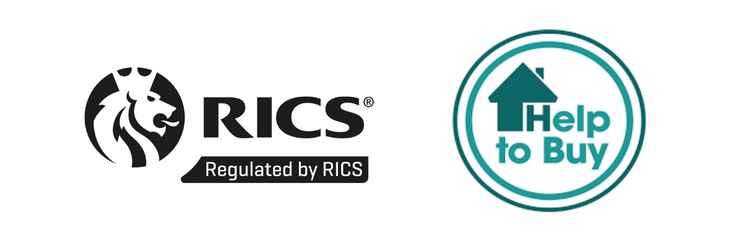When we’re in the market for a new home, we tend to meticulously analyse every little detail before making the big decision. The house survey is one such crucial element. It gives us an insight into the property’s condition, highlighting any issues that may not be immediately visible. This thorough examination can unearth potential problems that range from minor fixes to deal-breakers.
A common question we contend with is whether the findings from a house survey can be used as leverage in property price negotiations. The results can indeed serve as a powerful tool in discussions with the seller. Uncovered issues can prompt renegotiations on price, as buyers can argue for a reduction to accommodate the costs of repairs highlighted by the survey.
Also, understanding the types of house surveys available and the extent to which they examine the property is essential. Not all surveys are created equal, and the level of detail they provide can significantly influence our negotiating position. A more comprehensive survey might cost a bit more upfront, but it could potentially save us thousands if it means we avoid paying over the odds for a home with hidden problems.
Understanding House Surveys
When we consider buying a property, understanding house surveys is crucial as they provide insights into the condition of the home and any potential issues that could affect its value.
Types of House Surveys
There are several types of house surveys available to us in the UK, each varying in depth and detail.
- Condition Report (Level 1 Home Survey): A basic overview that highlights urgent defects, using simple ‘traffic light’ ratings to indicate the state of various parts of the property.
- HomeBuyer Report (Level 2 Home Survey): This survey includes all the features of a Condition Report, but it also offers a more comprehensive inspection and includes advice on repairs and maintenance.
- Building Survey (Level 3 Home Survey): This is the most thorough survey that provides an in-depth analysis of the property’s condition and details on the structure, including advice on defects, repairs, and maintenance options.
Types of House Surveys
Surveys can reveal a wide range of information that might not be immediately obvious to us:
such as cracks in walls, structural issues, damp, or rot.
such as broken roof tiles or issues with the chimney stack.
including hazardous materials or outdated systems.
The information gathered through these surveys can be invaluable, particularly when it comes to negotiating the purchase price of a property.
The Art of Negotiation
Using a house survey effectively can be a powerful tool in property price negotiations. We’ll explore how we can use survey results to our advantage and employ successful communication tactics with sellers.
Types of House Surveys
A house survey often uncovers issues that may not be immediately apparent. When these findings come to light, it’s crucial for us to be tactical.
Review the Survey:
- Identify key issues: Focus on significant faults that could affect the property’s value.
- Estimate repair costs: Seek quotes from tradespeople to understand potential expenses.
Presenting Findings:
- Be straightforward: Share the results with the seller factually and without emotion.
- Highlight concerns: Emphasise the most pressing or expensive issues that need addressing.
In presenting these details, your aim is to justify a lower offer that reflects the cost and effort required to rectify these problems.
Communication Tactics with Sellers
Effective communication is central to successful negotiation.
- Build rapport: Establish a positive relationship with the seller; it’s easier to negotiate when there’s mutual respect.
- Open dialogue: Encourage an honest discussion about the property’s condition and price.
By maintaining open and respectful communication, we pave the way for a more amicable negotiation process.
Evaluating Property Value
When looking at the value of a property, we consider it through various lenses. A comprehensive understanding helps with negotiations.
Comparative Market Analysis
We often start with a Comparative Market Analysis (CMA), which examines the prices of similar properties sold recently in the same area. This includes:
- Property Type: Detached, semi-detached, terraced, or flat.
- Size: Square footage and the number of bedrooms/bathrooms.
- Location: Proximity to amenities, schools, and transport links.
- Condition: The standard of fittings and finishes.
We use this data to establish a baseline value for the property in question.
Impact of Survey Findings on Value
The findings of a house survey can significantly alter our perception of a property’s value. Important considerations include:
- Significant Issues: Such as evidence of damp, structural, or roof problems.
- Repairs Needed: The cost of necessary repairs can be subtracted from the initial value.
These factors may provide leverage in negotiating a lower purchase price to account for potential expenses.
Final Considerations
Before you embark on the subtleties of property price negotiations, it’s essential to comprehend the legal standing of a house survey and the correct approach to initiate discussions about price based on the survey’s findings.
Legal Implications
A house survey can unveil defects that may not have been apparent during initial viewings. It’s your right as a potential buyer to consider these findings and, if necessary, consult a solicitor for guidance on any legal recourse. For instance, significant structural issues highlighted by the survey may affect the property’s market value and consequently alter your position during negotiations.
- Material facts discovered:
- Structural problems
- Roof or dampness concerns
Initiating Price Discussions
Armed with the survey results, you can confidently approach the seller to discuss a price adjustment. It’s important to present the facts clearly and professionally:
- Document the Issues: Prepare a list of concerns from the survey.
- Determine Costs: Estimate the financial implications of required repairs or renovations.
- Propose a New Price: Suggest a revised offer that reflects these potential costs.
Remember, your goal is to reach a fair agreement that acknowledges the property’s condition as revealed by the survey, without jeopardising the purchase.
Get in touch with Survey Hut today for a comprehensive Level 2 or Level 3 Home Survey. We are held to the highest professional standards by the RICS, so you know that you’ll get a high-quality report. Make sure your perfect home, is perfect.
Sharing is caring!
Sharing is caring!




